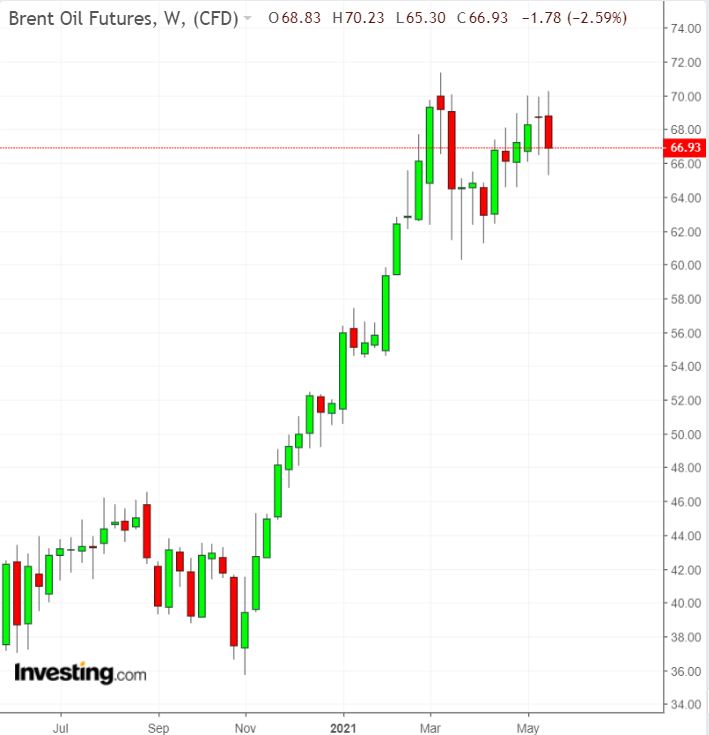Oil markets, like the rest of the global economy, are continuing the drive towards a return to normal, pre-COVID activity.
With the easing of coronavirus restrictions picking up pace in many regions worldwide, and the higher-demand of summer months just around the corner, this is an opportune time to take a look at a couple of the major global oil markets, and two major players, to see where they stand now, and what traders need to know moving forward.

China
China is ramping up its oil consumption, fueled in part by economic growth and government stimulus. In 2020, when China had GDP growth of 2.3%, it imported about 10.85 million bpd of oil. In 2021, China’s GDP is expected to grow at a rate of 7.4% so oil traders should expect to see growth in oil consumption as well.
How much more oil will China import to meet growing demand? China increased its quotas for independent refiners (non-state oil importers) in the first half of 2021 by 20%.
Traders should watch to see if and by how much China increases the oil import quotas for independent refiners in the second half of 2021. This will signal how much China’s overall oil demand can be expected to grow in 2021.
India
Even though India has been experiencing a coronavirus outbreak, India’s state oil refiner, Indian Oil Corporation (NS:IOC), is currently running at only a 12% reduction compared to a month ago.
Oil demand in India has dropped by 20% during this recent spike in coronavirus cases, but refiners aren’t cutting back on production of petroleum products to the same extent, (which I forecast here).
The decrease is being portrayed as significant by many media outlets, but when compared to last year, the 12% decline is not as severe as it could have been, especially since coronavirus cases are much higher in India this year.
Last April, IOC (which processes 1.4 million bpd of oil) operated at 50% capacity in April and 65% capacity in May. In April 2021, it operated at 96% capacity, and this month it has only gone down to 84% capacity.
This means that India’s current coronavirus issues are impacting the market much less significantly than last year.
Iran
Oil prices declined earlier in the week due to news that the talks between the United States and Iran could be nearing a resolution. The Biden administration has signaled its willingness to end the Trump era sanctions on Iranian oil that, at one point, brought Iran’s oil exports down below 500,000 bpd.
Iran says it is “priming” its oil fields and working on reestablishing relationships with former customers. The National Iranian Oil Company believes it can increase its production to its pre-sanctions level of 4 million bpd within three months of sanctions ending.
Even though Iran is talking about returning its oil to the market gradually, traders should know that Iran has actually been engaged in this process over the past several months.
According to data from TankerTrackers.com, Iran has increased its oil exports to nearly 1.8 million bpd since December 2020. A great deal of Iranian oil is already on the market—sold and shipped clandestinely to avoid sanctions for customers.
If negotiations are fruitful, Iran may simply start selling this oil openly, or it may continue clandestine sales while also putting more oil into the market more transparently. This could cause problems for OPEC.
Russia
Alexander Novak, Russia’s Deputy Prime Minister and former oil minister, said on Wednesday that demand is outpacing supply in the oil market—just slightly.
This, he added, is causing consuming nations to draw down some of their stored oil while also keeping prices generally stable.

Brent did hit $70 per barrel earlier in the week, but was down to $66.66 per barrel on Wednesday.
Though Brent has jumped up near the $70 mark several times in the past month, it has always returned to the mid-$60s shortly thereafter. The international benchmark has fluctuated during the last month but only within the confines of that limited range.
Novak’s comments provide an early look at Russia’s position heading into the next OPEC+ meeting in a week and a half. Russia increased its oil output in April by 160,000 bpd even though OPEC+’s planned production increases were not scheduled to go into effect until May.
Russia is likely to support continued gradual production increases, though Saudi Arabia may not be pleased with Russia’s recent overproduction.
OPEC+ will meet on June 1.
